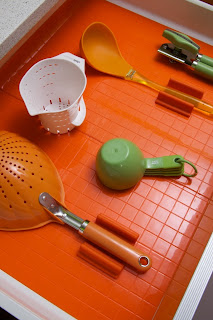Why Go
Pro
In the computer age it’s
hard not to be a do-it-yourselfer. Want to know how to grout kitchen tile or
install a hardwood floor? Hundreds
of suggestions are just a Google
search or youtube video away.
And if you’re one of those people who thinks a tool belt is a piece of fashion
clothing, performing such specific tasks is likely to have a successful
outcome.
But when it comes to
designing or remodeling an entire kitchen, we believe the only way to go is
pro. Bottom line (and that is a key consideration), a savvy design professional
will help you make informed, cost-saving decisions, as well as addressing the
pertinent function and lifestyle issues that will guarantee a happy end
result.
Remember there’s more to a
kitchen than meets the eye. In addition to making a myriad of decisions about
color, cabinets, countertops, backsplashes, appliances and so on, there are
electrical, plumbing and lighting considerations. There’s undoubtedly a youtube video for each of these items but trying to put that
puzzle together on your own could will quickly turn your dream kitchen into a
nightmare and be way more costly in the long run.
 |
| At kabi we encourage working with design professionals so you can get on with the all important business of enjoying your kitchen. |
Picking
A Pro
Start with who you
know. Does a friend or neighbor
have a kitchen you really like or admire? Ask them for a referral. Or take the time to go on kitchen or
home tours in your area. It’s a
good way to see the work of a variety of designers and you’ll likely get some
great ideas for your own project.
Many professional
organizations such as the NKBA (National Kitchen & Bath Association:
www.nkba.org) include online services for finding a designer in your city or
town. Organizations like the AIA (American Institute of Architects: www.aia.org) and ASID (American Society
of Interior Designers:
www.asid.org) offer similar services on their websites.
Once you have a list of
names visit their websites to see if their design styles mesh with yours.
Narrow your list to three or four and start the contact process. Then look to
our next blog entry for tips on how to prepare for your meeting with a design
professional.
Squash
Lover’s Delight
In the meantime, consider
making the yummy fall recipe below. It’s a perfect combo for meat eaters and
veggie lovers alike. With the
abundance of squash available this time of year, the recipe uses butternut
squash to add an unexpected layer of richness to an otherwise classic chili
recipe.
Beef and Butternut Chili
Ingredients
1 tablespoon canola oil, divided
1 1/2 pounds boneless chuck roast, trimmed and cut
into 1/2-inch cubes
3/4 teaspoon salt
1 1/2 cups chopped onion
1/2 cup chopped green bell pepper
2 tablespoons tomato paste
1 tablespoon minced fresh garlic
2 teaspoons diced jalapeño pepper
2/3 cup dry red wine
1 1/2 teaspoons ground ancho chile pepper
1 teaspoon dried oregano
1/2 teaspoon ground red pepper
1/4 teaspoon ground cumin
1/4 teaspoon ground coriander
1/8 teaspoon ground cinnamon
1 (28-ounce) can whole tomatoes, undrained and
chopped
1 (15-ounce) can no-salt-added kidney beans, rinsed
and drained
2 cups (1/2-inch) cubed peeled butternut squash
1 cup coarsely chopped carrot
6 tablespoons (reduced-fat )sour cream
2 tablespoons fresh cilantro leaves
Preparation
1. Heat a large Dutch oven over medium-high heat.
Coat pan with cooking spray. Add 1 teaspoon oil; swirl. Sprinkle beef with salt.
Add beef to pan; sauté 8 minutes, turning to brown on all sides. Remove beef.
2. Add 2 teaspoons oil to pan. Add onion and bell
pepper; sauté 3 minutes. Add tomato paste, garlic, and jalapeño; sauté 2
minutes, stirring constantly. Add wine; bring to a boil, scraping pan. Cook 2
minutes. Return beef to pan.
3. Stir in ancho chile
pepper and the next 7 ingredients (through kidney beans), and bring to a boil.
Cover, reduce heat to medium, and simmer gently for 1 hour. Add butternut
squash and 1 cup carrot, and simmer for 1 hour or until beef is tender. Ladle 1
1/3 cups chili into each of 6 bowls, and top each with 1 tablespoon sour cream
and 1 teaspoon cilantro






